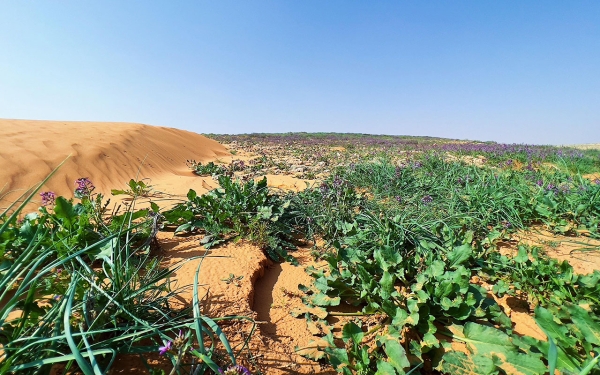

The National Environment Strategy is a set of procedures and plans for protecting the natural resources, vegetation cover, and wildlife in the Kingdom of Saudi Arabia. It was approved by the Council of Ministers on May 8, 2018.
The Ministry of Environment, Water, and Agriculture introduced its strategy via its affiliated Deputy-Ministry for Environment on July 10, 2018, to conserve the ecosystem and biodiversity for the work of the Ministry to be compatible with the international best environmental practices.
Axes of National Environment Strategy
The National Environment Strategy has several axes focusing on sustainability in the environment, economy, social well-being, and environmental participation. By conserving wildlife ecosystems, natural resources, and the balance between production and consumption, economically sustainable rehabilitation and organization will occur in the environment sector. Progress in development sectors will be achieved through this sustainability which gives a chance for partnerships between public and private sectors. Thus, these sectors will work more efficiently and dynamically regarding pollution reduction, improving quality of life, and boosting tourism.
Objectives of the National Environment Strategy
The National Environment Strategy aims to promote the environment sector's efficiency in its financial sustainability, institutional context, systems, and environment-enhancing models, raising the environmental commitment level across all development sectors by reducing pollution and adverse environmental impacts. Furthermore, it aims to expand green spaces, combat desertification, support wildlife, and conserve biodiversity.
The National Environment Strategy is also aimed at strengthening the local capability by improving it to adapt to climate change, raising environmental awareness, and enhancing the role of volunteer work and non-governmental organizations. The environment can be better evaluated by improving the quality of meteorological services and enhancing their role.
Mechanism of the National Environment Strategy
The strategy works through an organizational structure developed by the Ministry of Environment, Water, and Agriculture. It was developed to be one of the best international environmental practices after dividing the tasks and assigning the responsibilities related to the strategy's area of action among the National Center for Environmental Compliance, the National Center for Vegetation Development and Combating Desertification, the National Center for Meteorology, and the National Center for Wildlife. However, the four centers are headed by the Ministry of Environment, Water, and Agriculture; they remain independent in selecting specialized competencies to work on their plans and develop their actions, as well as matters related to their modern technology and data analysis mechanism.
Initiatives of the National Environment Strategy
The National Environment Strategy includes sixty-four initiatives aimed at restructuring the environment sector to keep pace with the Kingdom's expansion, environmental diversity, and the significant growth of the sectors affecting the environment. Several workshops were organized in that regard, one of which was attended by twenty members representing relevant sectors from ministries, official bodies, entities, and specialized universities. The workshop was also attended by twenty-five experts in seventeen fields, including environment, recycling and rehabilitation, knowledge of wildlife, all resources and modern technology, and combating desertification to set the National Environment Strategy.
Related quizzes
Related articles

